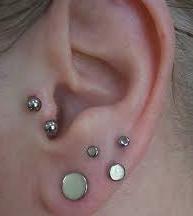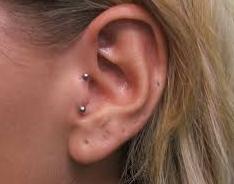If you want to get your tragus pierced, you may have several questions that are unanswered. This is a unique piercing, which has been in a special style for some time. Moreover, it is a piercing, which can be covered up or hidden when necessary. Before undergoing this procedure, you need to know where to get the exact location of your tragus on your ear. Other things to know include the complete process, how long it takes to heal and whether infections can occur.
Where is my Tragus?
You can find your tragus on the outer ear. You should note that it is part of the cartilage, which is located outside your ear canal. It is just in front of the concha, which is a very popular piercing spot. It plays an important role in helping your brain sense rear vs. front sound sources.
The process
Before undergoing this process, you need to be concerned with what tragus piercing procedure involves. This is because it is thicker cartilage skin. Moreover, this process requires more pressure than regular ear piercing.
The expert will show you how to lie down properly. After this, he or she will clean the area and place the cork in the ear canal. This is necessary to avoid damage. A straight or curved hollow needle is used to carry out the procedure. Once the process is complete, the expert will attach appropriate tragus jewelry.
Even though it is a thick part of skin, you will not experience painful piercing if the procedure is done by a trained and qualified person. Just like any other piercing, you will experience some stinging and pinch. However, this pain is relatively low. Ensure only a professional pierces your tragus. This process should not be done at home.
Trag
us Piercing Care
You nee d to take care of the tragus piercing until it completely heals. You should note that proper care is needed and leads to successful piercing. Moreover, it shortens the time of healing. If the procedure is not done correctly, your piercing may migrate, get rejected, or even become infected.
d to take care of the tragus piercing until it completely heals. You should note that proper care is needed and leads to successful piercing. Moreover, it shortens the time of healing. If the procedure is not done correctly, your piercing may migrate, get rejected, or even become infected.
The good thing about this type of piercing is that it is the low-maintenance procedure. Ensure you clean it regularly and adjust it to a minimum of twice every day. You should clean hands and clean the piercing and adjacent areas using a cotton ball with saline solution. Doing this on a routine basis will help you avoid infection. Moreover, you should be on the lookout for signs of infection and other irregularities.







